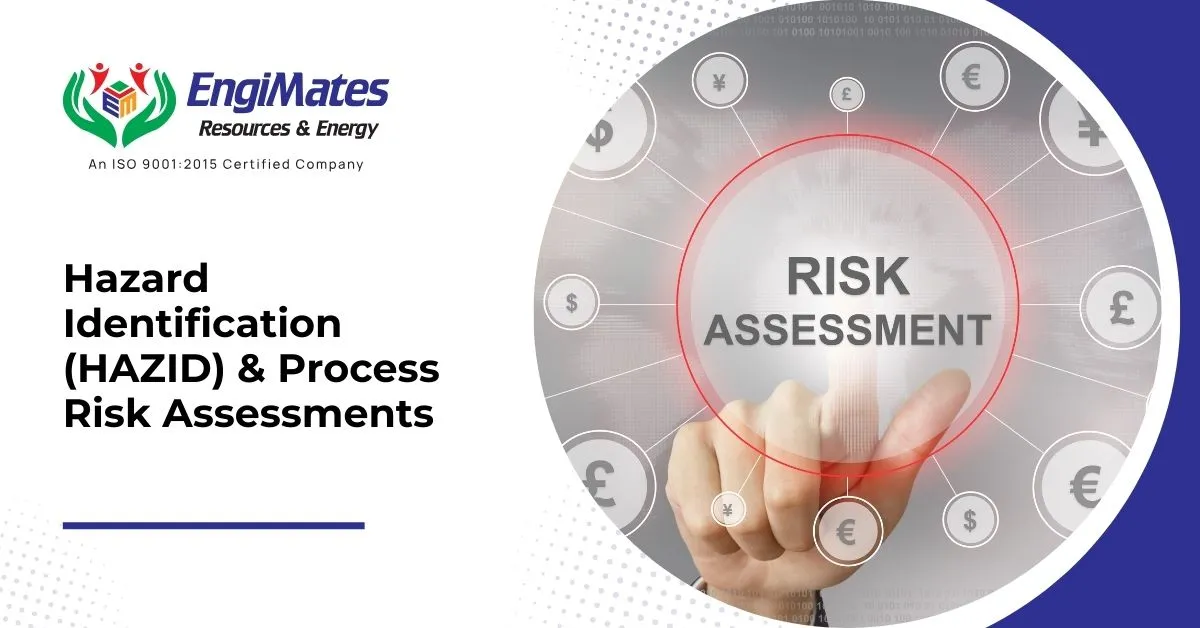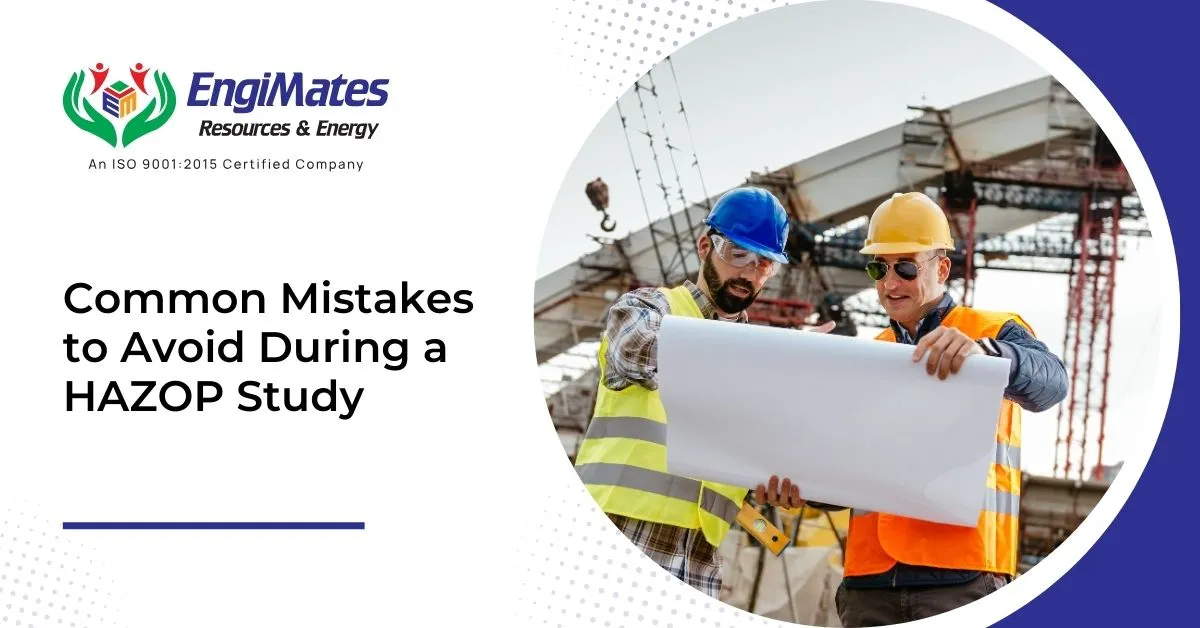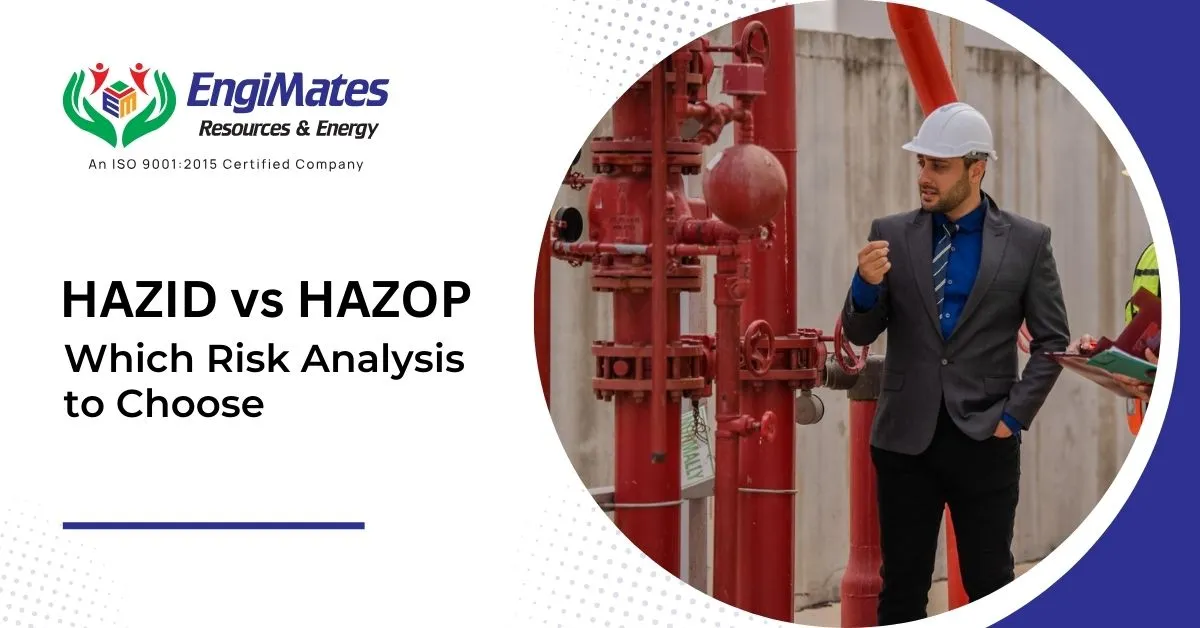In industries such as oil & gas, petrochemicals, and manufacturing, safety is paramount. Ensuring the…

Risk management is a critical aspect of ensuring safety and efficiency in industrial operations. Two key methodologies used for hazard identification and risk analysis are HAZOP (Hazard and Operability Study) and HAZID (Hazard Identification Study). While both approaches aim to enhance safety, integrating HAZOP with HAZID creates a more robust risk assessment framework. This blog explores how combining these methodologies improves risk management and ensures operational safety.
Table of Contents
Understanding HAZOP and HAZID
What is HAZOP?
HAZOP (Hazard and Operability Study) is a structured and systematic method for examining complex processes to identify potential hazards and operational issues. It focuses on deviations from design intent by analysing factors such as pressure, temperature, flow rates, and human interactions. HAZOP is widely used in industries such as oil & gas, chemicals, and pharmaceuticals.
What is HAZID?
HAZID (Hazard Identification Study) is a high-level risk assessment tool that identifies potential hazards early in the project lifecycle. Unlike HAZOP, which is more detailed and process-specific, HAZID provides a broad hazard evaluation and is often used during conceptual and design phases to assess potential risks.
Benefits of Integrating HAZOP with HAZID
Integrating HAZOP with HAZID enhances risk management by combining early hazard identification with detailed process analysis. This approach improves safety, compliance, and operational efficiency.
1. Comprehensive Hazard Assessment
By integrating HAZOP’s detailed process analysis with HAZID’s early-stage hazard identification, organizations gain a more complete understanding of potential risks. This proactive approach minimizes safety concerns before they become operational threats.
2. Improved Risk Mitigation Strategies
HAZID helps in identifying general hazards, while HAZOP provides an in-depth analysis of process deviations. Combining both ensures the development of more effective mitigation measures, reducing the likelihood of accidents and operational failures.
3. Enhanced Safety and Compliance
Regulatory bodies require industries to adhere to stringent safety standards. The integration of HAZOP and HAZID strengthens compliance with safety regulations, improving workplace safety and environmental protection.
4. Cost and Time Efficiency
Identifying risks early with HAZID prevents costly design modifications later, while HAZOP’s detailed analysis ensures optimized operational processes. Together, they minimize delays and financial losses caused by unforeseen hazards.
Enhance your risk management strategy with HAZOP and HAZID integration. Contact us today to ensure safer and more efficient operations!
Implementing an Integrated HAZOP-HAZID Approach
- Early-Stage HAZID: Conduct HAZID during conceptual and design phases to identify broad hazards.
- Process-Specific HAZOP: Perform a detailed HAZOP analysis to evaluate process deviations and operability issues.
- Risk Prioritization: Use a combined risk matrix to categorize hazards and prioritize mitigation strategies.
- Continuous Monitoring: Regularly update risk assessments to incorporate operational changes and new industry regulations.
Frequently Asked Questions
What is the difference between HAZID and HAZOP?
HAZID identifies potential hazards early, while HAZOP analyses process deviations to improve safety and operability.
What is HAZOP in risk management?
HAZOP is a systematic method used to identify and mitigate risks by analysing deviations in industrial processes.
Is the HAZOP methodology acceptable for hazard evaluation?
Yes, HAZOP is widely accepted for hazard evaluation as it provides a structured approach to identifying and reducing risks.
What is the relationship between HAZOP studies and risk management?
HAZOP studies help manage risks by systematically identifying hazards and ensuring safer, more efficient operations.
Conclusion
Integrating HAZOP with HAZID enhances risk management by providing a structured, proactive, and efficient approach to hazard assessment. This combined methodology strengthens safety measures, ensures compliance, and reduces operational risks. Industries that adopt this integrated framework can achieve better safety outcomes, operational efficiency, and regulatory adherence.




